-
 Bitcoin
Bitcoin $108,165.4587
0.78% -
 Ethereum
Ethereum $2,456.3517
1.15% -
 Tether USDt
Tether USDt $1.0003
0.00% -
 XRP
XRP $2.1934
0.05% -
 BNB
BNB $650.0935
0.52% -
 Solana
Solana $151.3905
2.69% -
 USDC
USDC $0.9998
0.00% -
 TRON
TRON $0.2751
-0.32% -
 Dogecoin
Dogecoin $0.1640
0.87% -
 Cardano
Cardano $0.5631
0.57% -
 Hyperliquid
Hyperliquid $38.7115
4.69% -
 Bitcoin Cash
Bitcoin Cash $493.1868
-0.39% -
 Sui
Sui $2.8217
3.61% -
 Chainlink
Chainlink $13.3994
2.08% -
 UNUS SED LEO
UNUS SED LEO $9.1632
0.94% -
 Avalanche
Avalanche $18.0318
1.97% -
 Stellar
Stellar $0.2388
0.35% -
 Toncoin
Toncoin $2.8763
1.41% -
 Shiba Inu
Shiba Inu $0.0...01160
1.59% -
 Litecoin
Litecoin $86.6393
1.29% -
 Hedera
Hedera $0.1485
0.16% -
 Monero
Monero $315.7948
1.56% -
 Polkadot
Polkadot $3.4240
1.88% -
 Bitget Token
Bitget Token $4.6314
-0.44% -
 Dai
Dai $0.9998
-0.01% -
 Ethena USDe
Ethena USDe $1.0002
-0.01% -
 Uniswap
Uniswap $7.2110
2.59% -
 Aave
Aave $270.6087
6.07% -
 Pi
Pi $0.5350
0.52% -
 Pepe
Pepe $0.0...09545
1.26%
How to view trading pair depth on Bitget
To view trading pair depth on Bitget, log in, select your pair, and click the "Depth" tab to analyze market liquidity and optimize trading strategies.
Apr 03, 2025 at 03:08 am

Understanding the trading pair depth on a cryptocurrency exchange like Bitget is crucial for making informed trading decisions. The depth of a trading pair indicates the market's liquidity and the potential impact of large orders on the market price. This article will guide you through the process of viewing trading pair depth on Bitget, helping you to better understand market dynamics and optimize your trading strategies.
What is Trading Pair Depth?
Trading pair depth refers to the volume of buy and sell orders at different price levels for a specific trading pair. It is visually represented in a depth chart, which shows the cumulative volume of orders on both the bid (buy) and ask (sell) sides. A deeper market indicates higher liquidity, meaning large orders can be executed with minimal impact on the market price. Understanding this can help traders anticipate price movements and manage their trades more effectively.
Accessing the Depth Chart on Bitget
To view the trading pair depth on Bitget, follow these steps:
- Log into your Bitget account.
- Navigate to the trading section and select the trading pair you are interested in.
- Look for the "Depth" or "Order Book" tab, usually located near the trading chart.
- Click on the "Depth" tab to view the depth chart for the selected trading pair.
Understanding the Depth Chart
The depth chart on Bitget is typically divided into two sections: the bid side and the ask side. The bid side shows the cumulative volume of buy orders at various price levels, while the ask side shows the cumulative volume of sell orders. The chart is often color-coded, with the bid side in one color (e.g., green) and the ask side in another (e.g., red).
- Bid Side: This represents the demand for the cryptocurrency. The higher the volume at a particular price level, the more buyers are willing to purchase at that price.
- Ask Side: This represents the supply of the cryptocurrency. The higher the volume at a particular price level, the more sellers are willing to sell at that price.
Analyzing the Depth Chart
Analyzing the depth chart can provide valuable insights into market sentiment and potential price movements. Here are some key points to consider:
- Liquidity: A deep market with high volumes on both the bid and ask sides indicates high liquidity. This means you can execute large orders without significantly affecting the market price.
- Price Levels: Look for significant volume concentrations at specific price levels. These can act as support or resistance levels, influencing future price movements.
- Imbalances: If there is a significant imbalance between the bid and ask sides, it may indicate a potential price movement. For example, a large volume of buy orders at a certain price level may suggest upward pressure on the price.
Using Depth Chart for Trading Strategies
The depth chart can be a powerful tool for developing trading strategies. Here are some ways you can use it:
- Identifying Entry and Exit Points: By analyzing the depth chart, you can identify optimal entry and exit points for your trades. For example, if you see a large volume of buy orders at a certain price level, it may be a good entry point for a long position.
- Managing Risk: Understanding the depth of the market can help you manage your risk more effectively. If the market is shallow, you may need to adjust your position size to avoid significant price slippage.
- Anticipating Price Movements: By monitoring changes in the depth chart, you can anticipate potential price movements. For example, if you see a sudden increase in buy orders, it may indicate an upcoming price surge.
Practical Example of Using Depth Chart on Bitget
Let's consider a practical example of how to use the depth chart on Bitget for trading the BTC/USDT pair:
- Step 1: Log into your Bitget account and navigate to the BTC/USDT trading pair.
- Step 2: Click on the "Depth" tab to view the depth chart.
- Step 3: Analyze the chart to identify significant volume concentrations. Suppose you notice a large volume of buy orders at $30,000 and a large volume of sell orders at $31,000.
- Step 4: Based on this information, you might decide to enter a long position at $30,000, anticipating that the price will move towards the $31,000 resistance level.
- Step 5: Monitor the depth chart for changes in volume and adjust your strategy accordingly.
Advanced Techniques for Depth Chart Analysis
For more advanced traders, there are additional techniques you can use to analyze the depth chart on Bitget:
- Volume Profile: Some traders use volume profile indicators to visualize the distribution of trading volume across different price levels. This can help identify key support and resistance levels.
- Order Flow: By monitoring the order flow, you can gain insights into the real-time buying and selling activity in the market. This can help you anticipate short-term price movements.
- Market Depth Indicators: Some trading platforms offer market depth indicators that provide a numerical representation of the depth of the market. These can be useful for quantifying liquidity and making more precise trading decisions.
Common Mistakes to Avoid
When using the depth chart for trading, it's important to avoid common mistakes that can lead to poor trading decisions:
- Overreliance on Depth Chart: While the depth chart is a valuable tool, it should not be the sole basis for your trading decisions. Always consider other factors such as market trends, news, and technical indicators.
- Ignoring Market Context: The depth chart should be analyzed in the context of the broader market. For example, a large volume of buy orders may not be significant if the overall market sentiment is bearish.
- Misinterpreting Volume: Be cautious when interpreting volume on the depth chart. A large volume at a certain price level may not necessarily indicate strong support or resistance if it is spread across many small orders.
Tips for Effective Depth Chart Analysis
To make the most of the depth chart on Bitget, consider the following tips:
- Regular Monitoring: Regularly monitor the depth chart to stay updated on changes in market liquidity and order flow.
- Combine with Other Tools: Use the depth chart in conjunction with other trading tools such as technical indicators and fundamental analysis to make more informed trading decisions.
- Practice: Like any trading skill, analyzing the depth chart takes practice. Start with small trades and gradually increase your position size as you become more comfortable with the tool.
Frequently Asked Questions
Q: What is the purpose of viewing trading pair depth on Bitget?
A: Viewing trading pair depth on Bitget helps traders understand market liquidity, identify potential support and resistance levels, and make more informed trading decisions. It provides insights into the supply and demand dynamics of a specific trading pair.
Q: How can I access the depth chart on Bitget?
A: To access the depth chart on Bitget, log into your account, navigate to the trading section, select the trading pair you are interested in, and click on the "Depth" or "Order Book" tab.
Q: What does a deep market indicate on the depth chart?
A: A deep market on the depth chart indicates high liquidity, meaning there is a large volume of buy and sell orders at various price levels. This allows traders to execute large orders with minimal impact on the market price.
Q: How can I use the depth chart to identify entry and exit points for my trades?
A: You can use the depth chart to identify entry and exit points by looking for significant volume concentrations at specific price levels. For example, a large volume of buy orders at a certain price level may indicate a good entry point for a long position, while a large volume of sell orders may indicate a good exit point.
Q: What are some common mistakes to avoid when using the depth chart for trading?
A: Common mistakes to avoid include overreliance on the depth chart, ignoring market context, and misinterpreting volume. Always consider other factors such as market trends and technical indicators when making trading decisions.
Q: Are there any advanced techniques for analyzing the depth chart on Bitget?
A: Yes, advanced techniques include using volume profile indicators, monitoring order flow, and using market depth indicators. These can provide additional insights into market dynamics and help you make more precise trading decisions.
Disclaimer:info@kdj.com
The information provided is not trading advice. kdj.com does not assume any responsibility for any investments made based on the information provided in this article. Cryptocurrencies are highly volatile and it is highly recommended that you invest with caution after thorough research!
If you believe that the content used on this website infringes your copyright, please contact us immediately (info@kdj.com) and we will delete it promptly.
- Bitcoin: A Lifeline Against Authoritarian Regimes and a Strategic Asset?
- 2025-06-29 22:30:12
- Elementary, My Dear Collector: Sherlock Holmes 50p Coins on eBay!
- 2025-06-29 22:30:12
- New Coin Disappearing Fast: The Price Impact of Angry Pepe Fork
- 2025-06-29 22:35:12
- Tron vs. Dogecoin: A Cryptocurrency Showdown in 2025
- 2025-06-29 22:50:12
- Ethereum, DeFi, and Cryptocurrency: Navigating the Evolving Landscape
- 2025-06-29 23:07:14
- Bitcoin Acquisition Strategy: From Saylor's Playbook to London's Crypto Craze
- 2025-06-29 23:30:12
Related knowledge
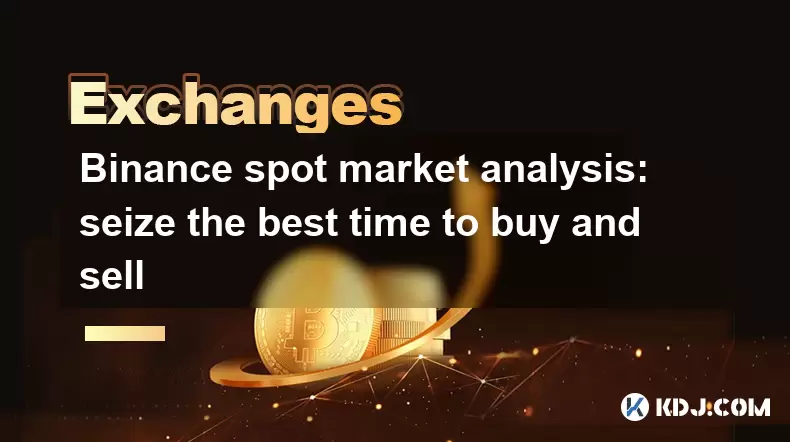
Binance spot market analysis: seize the best time to buy and sell
Jun 19,2025 at 04:56pm
Understanding the Binance Spot MarketThe Binance spot market is one of the most popular platforms for cryptocurrency trading globally. It allows users to trade digital assets at current market prices, making it essential for traders aiming to buy low and sell high. Unlike futures or margin trading, spot trading involves direct ownership of the asset aft...
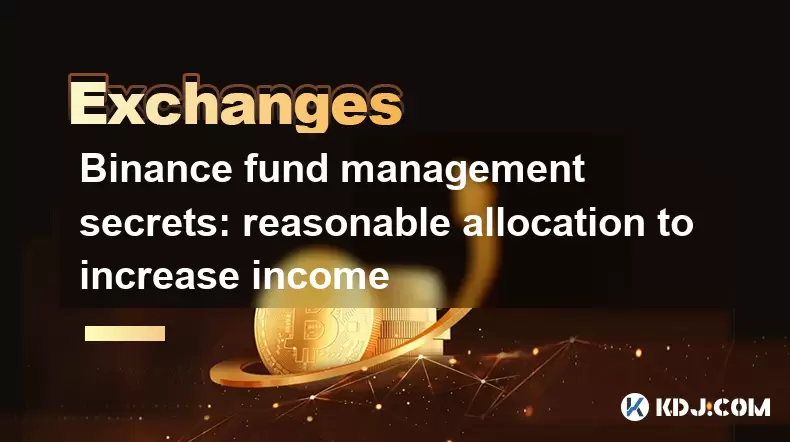
Binance fund management secrets: reasonable allocation to increase income
Jun 22,2025 at 02:29pm
Understanding Binance Fund ManagementBinance fund management involves strategic allocation of your cryptocurrency assets to optimize returns while managing risk. The key to successful fund management lies in understanding how different investment options on the Binance platform can be utilized to create a diversified portfolio. This includes spot tradin...
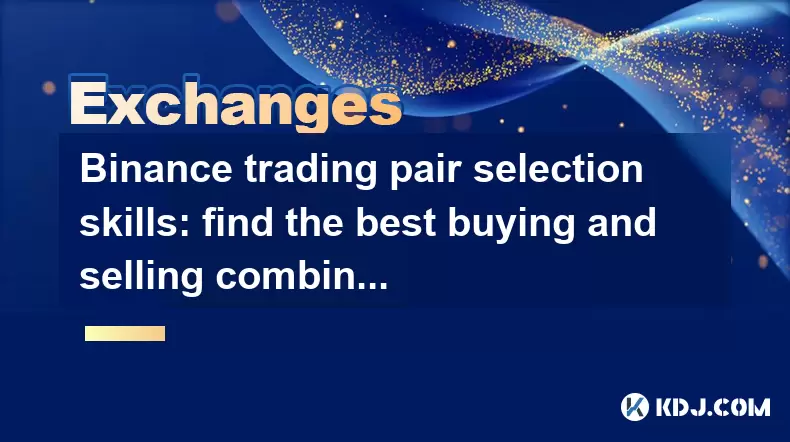
Binance trading pair selection skills: find the best buying and selling combination
Jun 23,2025 at 02:49am
Understanding the Basics of Trading Pairs on BinanceBefore diving into trading pair selection skills, it's essential to understand what a trading pair is. On Binance, a trading pair refers to two cryptocurrencies that can be traded against each other. For example, BTC/USDT means Bitcoin is being traded against Tether. Each trading pair has its own liqui...

Binance new coin mining strategy: participate in Launchpool to earn income
Jun 23,2025 at 11:56am
What is Binance Launchpool and how does it work?Binance Launchpool is a feature introduced by the world’s largest cryptocurrency exchange, Binance, to allow users to earn new tokens through staking. This platform enables users to stake their existing cryptocurrencies (such as BNB, BUSD, or other supported assets) in exchange for newly launched tokens. T...
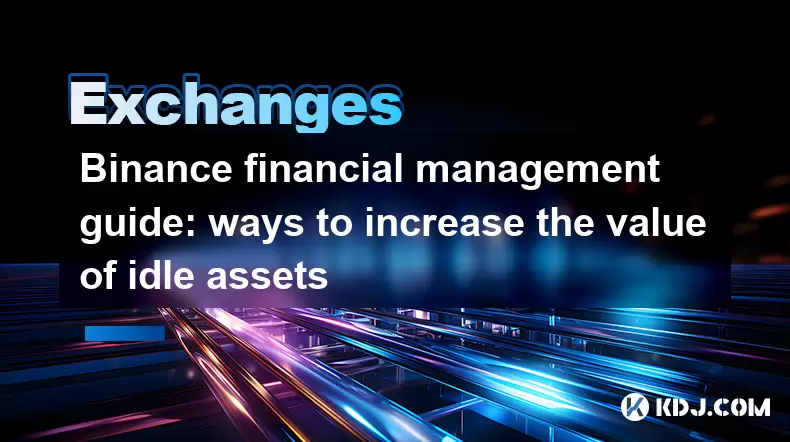
Binance financial management guide: ways to increase the value of idle assets
Jun 19,2025 at 11:22pm
Understanding Idle Assets in the Cryptocurrency SpaceIn the fast-paced world of cryptocurrency, idle assets refer to digital currencies that are not actively being used for trading, staking, or yield farming. Holding these funds in a wallet without utilizing them means missing out on potential growth opportunities. Binance, as one of the leading platfor...
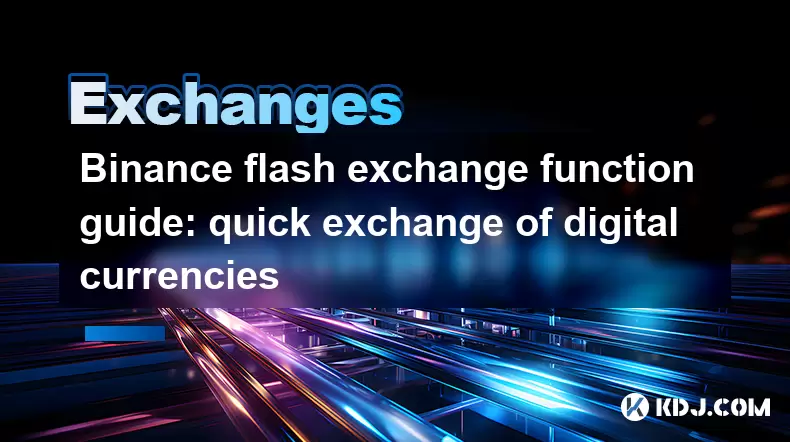
Binance flash exchange function guide: quick exchange of digital currencies
Jun 23,2025 at 12:29pm
What is the Binance Flash Exchange Function?The Binance Flash Exchange function is a powerful tool designed to allow users to instantly swap between supported cryptocurrencies without the need for placing traditional buy/sell orders. This feature simplifies the trading process by offering a direct exchange mechanism, eliminating the requirement to conve...

Binance spot market analysis: seize the best time to buy and sell
Jun 19,2025 at 04:56pm
Understanding the Binance Spot MarketThe Binance spot market is one of the most popular platforms for cryptocurrency trading globally. It allows users to trade digital assets at current market prices, making it essential for traders aiming to buy low and sell high. Unlike futures or margin trading, spot trading involves direct ownership of the asset aft...

Binance fund management secrets: reasonable allocation to increase income
Jun 22,2025 at 02:29pm
Understanding Binance Fund ManagementBinance fund management involves strategic allocation of your cryptocurrency assets to optimize returns while managing risk. The key to successful fund management lies in understanding how different investment options on the Binance platform can be utilized to create a diversified portfolio. This includes spot tradin...

Binance trading pair selection skills: find the best buying and selling combination
Jun 23,2025 at 02:49am
Understanding the Basics of Trading Pairs on BinanceBefore diving into trading pair selection skills, it's essential to understand what a trading pair is. On Binance, a trading pair refers to two cryptocurrencies that can be traded against each other. For example, BTC/USDT means Bitcoin is being traded against Tether. Each trading pair has its own liqui...

Binance new coin mining strategy: participate in Launchpool to earn income
Jun 23,2025 at 11:56am
What is Binance Launchpool and how does it work?Binance Launchpool is a feature introduced by the world’s largest cryptocurrency exchange, Binance, to allow users to earn new tokens through staking. This platform enables users to stake their existing cryptocurrencies (such as BNB, BUSD, or other supported assets) in exchange for newly launched tokens. T...

Binance financial management guide: ways to increase the value of idle assets
Jun 19,2025 at 11:22pm
Understanding Idle Assets in the Cryptocurrency SpaceIn the fast-paced world of cryptocurrency, idle assets refer to digital currencies that are not actively being used for trading, staking, or yield farming. Holding these funds in a wallet without utilizing them means missing out on potential growth opportunities. Binance, as one of the leading platfor...

Binance flash exchange function guide: quick exchange of digital currencies
Jun 23,2025 at 12:29pm
What is the Binance Flash Exchange Function?The Binance Flash Exchange function is a powerful tool designed to allow users to instantly swap between supported cryptocurrencies without the need for placing traditional buy/sell orders. This feature simplifies the trading process by offering a direct exchange mechanism, eliminating the requirement to conve...
See all articles

























































































